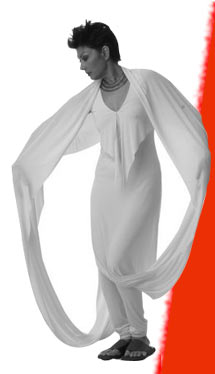Babri Masjid and the horrors that followed are much in the minds of people – the BJP is up in arms about the Lieberhans Commission – not about the fact that it indicts all the top brass, Mr Vajpayee included, but that someone leaked it to the press. But the anniversary also comes up on the 6th, and for many of us that act and that day started a chapter in history that we still can not live down.
It was then that Darpana’s Centre for Non-violence Through the Arts was born with a debate on what caused prejudice that lead to violence and how early in life this prejudice gets attached to us. And whether art in any of its forms could open and light up the debate.
One of our first research projects was in a school, working with four and five year olds. All kids love cartoons – whether in a language they understand or not. But parents or adults who have looked at them closely know that cartoons are cruel and very violent. So we took them as a starting point to understand the comprehension of violence and of violence as humour amongst the young children. We edited all the funnies – Tom and Jerry, Casper the Ghost, Tweety and SIlvester and what not, till we had a six to seven minute loop of people hitting others, kicking them, making them fall over, throwing things at them and what not. We introduced this to our class of youngsters. They rolled with laughter the first time around, and the second and the third. At that point we divided the class into two. We asked group one to continue laughing when they found the visuals funny. We asked the other group to say ouch every time someone hit someone else or did them a violent act. After the first couple of rounds both groups realized that whenever one group laughed the other said ouch. They looked perplexed. We asked them if it was funny when they were hit or kicked, and there was a universal NO. Then how did they find it funny when someone else was hit? And would they like it if other people laughed when they were in pain? Slowly the children began to understand that their laughter was perhaps misdirected, that to find funny someone else’s grief was perhaps not such a great idea.
Another interesting study we did was with older children, adolescents in fact. We asked them to keep a diary of their days, and to mark in them whenever they felt they behaved violently towards someone or when someone was violent towards them. We explained that banging a door shut on someone was also a violent act. That being abusive should also be noted. Soon the youngsters started getting a very different picture of themselves and their peers, their teachers and parents. And a strong gender difference started appearing. The girls regularly reported feeling violated when whistled at, or looked at inappropriately or commented upon when they were passing a group of boys. When the boys discovered this they were stunned – they thought it was a sign of admiration and appreciation.
We are a society where violence of all kinds is accepted. Much of what we call normal behaviour is, in fact, violence. There is little, however, that we do to sensitize our children about the ills of violence. A teacher hitting a child is normal – a recent study in Gujarat asked children what a foot ruler was used for. 100% of rural children put ”hitting” as one of its uses! A father yelling at or beating a mother is commonplace. A small incidence turning into a lynching mob is not that unusual to see. And yet no discussion on the subject takes place in the home or in our schools – or for that matter in other fora.
We are being desensitized. We have become inured to the violence of speech and action that surrounds us, that involves us. Are we aware of this? When Jains and Buddhists “practice” non-violence, are they aware that there are many forms of daily violence that they and we involve ourselves in, that are as dangerous, and perhaps more cancerous and incipient than going to war?.

